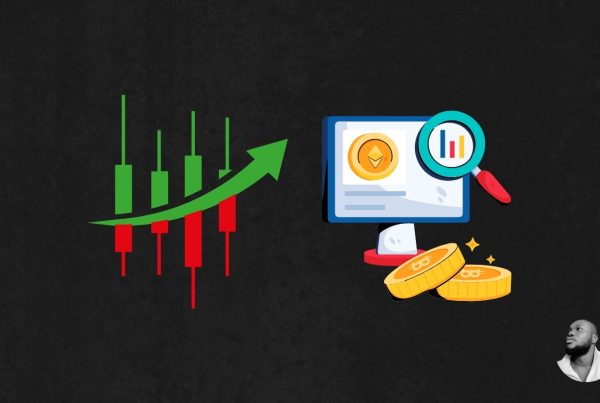Stablecoins Explained for Beginners
In the rapidly evolving world of cryptocurrency, stablecoins have emerged as a vital component, bridging the gap between traditional finance and the digital currency ecosystem. For those new to the crypto space, understanding stablecoins is essential for navigating the complexities of digital assets. This article will provide a comprehensive overview of stablecoins, their types, benefits, risks, and real-world applications.
What Are Stablecoins?
Stablecoins are a type of cryptocurrency designed to maintain a stable value by pegging them to a reserve of assets, typically fiat currencies like the US dollar or commodities like gold. Unlike traditional cryptocurrencies such as Bitcoin or Ethereum, which can experience significant price volatility, stablecoins aim to provide a more predictable and stable value.
Types of Stablecoins
Stablecoins can be categorized into three main types based on their underlying mechanisms:
- Fiat-Collateralized Stablecoins: These stablecoins are backed by a reserve of fiat currency held in a bank account. For every stablecoin issued, an equivalent amount of fiat currency is stored as collateral. Examples include Tether (USDT) and USD Coin (USDC).
- Crypto-Collateralized Stablecoins: These stablecoins are backed by other cryptocurrencies. To account for the volatility of the collateral, these stablecoins are often over-collateralized. An example is DAI, which is backed by Ethereum and other cryptocurrencies.
- Algorithmic Stablecoins: These stablecoins use algorithms and smart contracts to control the supply of the coin, adjusting it based on market demand to maintain a stable value. Examples include TerraUSD (UST) and Ampleforth (AMPL).
How Do Stablecoins Work?
The functionality of stablecoins varies depending on their type. Here’s a closer look at how each type operates:
Fiat-Collateralized Stablecoins
Fiat-collateralized stablecoins are the most straightforward. For instance, if a company issues 1 million USDT, it must hold 1 million US dollars in reserve. This reserve is regularly audited to ensure transparency and trust. Users can redeem their stablecoins for the underlying fiat currency at any time, maintaining a 1:1 peg.
Crypto-Collateralized Stablecoins
Crypto-collateralized stablecoins operate differently. They require users to lock up a certain amount of cryptocurrency as collateral to mint new stablecoins. For example, to create DAI, a user might need to deposit $150 worth of Ethereum to mint $100 worth of DAI. This over-collateralization helps absorb price fluctuations in the underlying asset.

Algorithmic Stablecoins
Algorithmic stablecoins do not rely on collateral but instead use algorithms to manage supply. When the price of the stablecoin rises above its target value, the algorithm increases supply by minting more coins. Conversely, if the price falls below the target, the algorithm reduces supply by buying back coins. This mechanism aims to stabilize the coin’s value without the need for collateral.
Benefits of Stablecoins
Stablecoins offer several advantages that make them appealing to both users and investors:
- Price Stability: The primary benefit of stablecoins is their ability to maintain a stable value, making them a reliable medium of exchange and store of value.
- Ease of Use: Stablecoins can be easily transferred and traded on various cryptocurrency exchanges, providing liquidity and accessibility.
- Decentralization: Many stablecoins operate on decentralized platforms, allowing users to transact without relying on traditional banking systems.
- Global Reach: Stablecoins can be used across borders, facilitating international transactions without the need for currency conversion.
Risks Associated with Stablecoins
While stablecoins offer numerous benefits, they are not without risks:
- Regulatory Risks: As governments around the world begin to scrutinize stablecoins, regulatory changes could impact their use and acceptance.
- Collateral Risks: For collateralized stablecoins, the value of the underlying assets can fluctuate, potentially leading to instability if not properly managed.
- Centralization Risks: Some fiat-collateralized stablecoins are issued by centralized entities, which can pose risks related to trust and transparency.
- Algorithmic Risks: Algorithmic stablecoins can be vulnerable to market manipulation and may fail to maintain their peg during extreme market conditions.
Real-World Applications of Stablecoins
Stablecoins have found various applications across different sectors, showcasing their versatility and utility:
Remittances and Cross-Border Payments
Stablecoins are increasingly being used for remittances and cross-border payments due to their low transaction fees and speed. For example, a migrant worker can send money home using USDC, allowing the recipient to receive funds quickly without incurring high fees associated with traditional remittance services.
Decentralized Finance (DeFi)
In the DeFi space, stablecoins play a crucial role as they provide liquidity for lending, borrowing, and trading. Platforms like Aave and Compound allow users to lend and borrow stablecoins, earning interest on their holdings while maintaining a stable value.
E-commerce and Payments
Many online retailers are beginning to accept stablecoins as a form of payment. This allows customers to make purchases without the volatility associated with traditional cryptocurrencies. For instance, Shopify merchants can integrate stablecoin payment options, providing customers with a familiar and stable payment method.
Statistics on Stablecoins
The growth of stablecoins has been remarkable in recent years. As of 2025, the total market capitalization of stablecoins exceeds $150 billion, with Tether (USDT) and USD Coin (USDC) leading the pack. According to recent reports, stablecoins account for over 60% of the total trading volume on cryptocurrency exchanges, highlighting their importance in the crypto ecosystem.
Frequently Asked Questions (FAQs)
What is the main purpose of stablecoins?
The main purpose of stablecoins is to provide a stable medium of exchange and store of value in the volatile cryptocurrency market.
Are stablecoins safe to use?
While stablecoins offer stability, they come with risks such as regulatory scrutiny and potential collateral issues. It’s essential to choose reputable stablecoins and understand their underlying mechanisms.
How can I buy stablecoins?
You can buy stablecoins on various cryptocurrency exchanges using fiat currency or other cryptocurrencies. Popular exchanges include Binance, Coinbase, and Kraken.
Can stablecoins be converted back to fiat currency?
Yes, most fiat-collateralized stablecoins can be redeemed for their underlying fiat currency at a 1:1 ratio, provided the issuer maintains sufficient reserves.
What are the most popular stablecoins?
The most popular stablecoins include Tether (USDT), USD Coin (USDC), and DAI, each serving different purposes within the cryptocurrency ecosystem.
Conclusion
Stablecoins represent a significant innovation in the cryptocurrency landscape, providing a bridge between traditional finance and the digital economy. Their ability to maintain a stable value makes them an attractive option for users looking to mitigate the risks associated with cryptocurrency volatility. As the adoption of stablecoins continues to grow, understanding their mechanisms, benefits, and risks will be crucial for anyone looking to navigate the world of digital assets.
For the latest news and updates on cryptocurrencies, including stablecoins, visit Bitrabo. Follow me on social media for more insights: X, Instagram, Threads.
Disclaimer: This article is for informational purposes only and should not be considered financial advice. Always do your own research before investing in cryptocurrencies.
The Crypto Watchlist of the Week 🔎
Subscribe to receive expert-curated projects with real potential—plus trends, risks, and insights that matter. Get handpicked crypto projects, deep analysis & market updates delivered to you.


